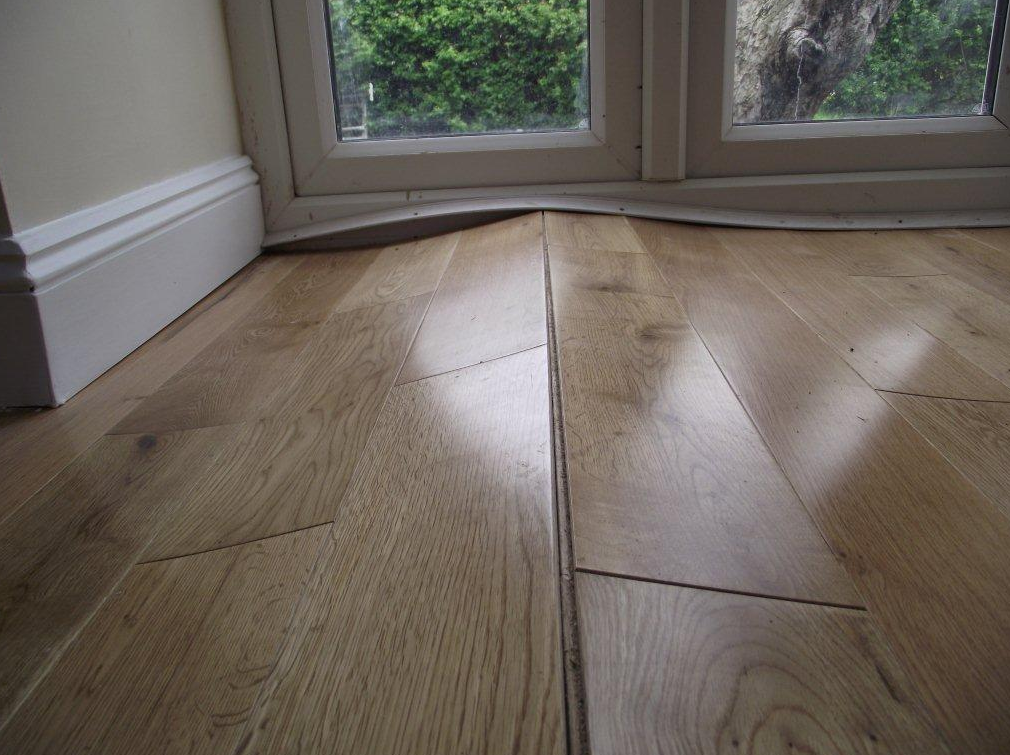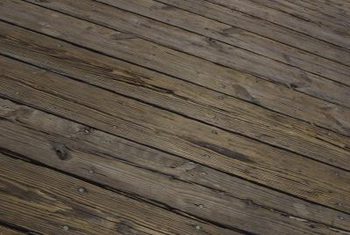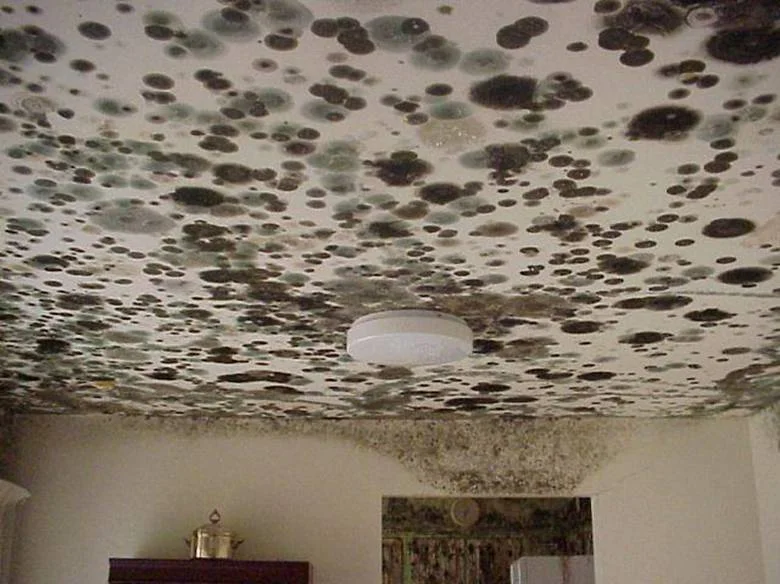Reclaim teak
Our work, reclaim teak wire brushed
Minimizing Moisture from Subflooring
Subfloor moisture and poor installation
The key to minimizing moisture from your subflooring is to make sure to use the appropriate vapor barrier in conjunction with understanding the specific moisture issues your subflooring may display.
All types of subflooring should have some sort of vapor retarder barrier installed to block moisture from seeping up from the subflooring into your new hardwood flooring. A vapor retarder is any barrier that is used in the construction industry to prevent or block moisture from seeping from one section of a house to another. For example, vapor retarders can be made of foil, large sections of plastic sheeting with different thicknesses, felt paper or sheets of vinyl. Vapor retarders can be used when installing siding or roofing as well.
Subflooring is made from various types of materials including wood, vinyl, concrete or other materials. Each of these types of materials presents its own moisture control issues that need to be addressed and understood before hardwood flooring is installed.
Your professional hardwood floor installer will be able to check your subflooring for moisture levels prior to installation. To have the best chance of having the moisture levels between your subflooring and your hardwood flooring to be within their proper ranges, make sure humidity control units are in place in your home and running adequately at least five days prior to the hardwood floor being delivered to your home. Your installer can then determine which vapor barrier will provide the proper protection your hardwood floor will need.
Wood subflooring will always expand and contract with moisture changes just like hardwood flooring will. Concrete flooring also will continually “breathe” because it’s a porous material. Moisture on concrete can be seen in the form of vapor when weather conditions are prime or even condensation in places. Which vapor barrier gets installed will be determined by the type of subflooring you have and what types of moisture levels you’re operating at. Your subflooring should be securely intact and level prior to installation.
During installation, installers should be careful to not penetrate a vapor barrier once it has been installed. For example, if a vapor barrier is laid on top of a subflooring but a solid wood floor nailed down on top of it in which the nail penetrates the actual vapor barrier, then the barrier now has a small hole in it. Moisture can slowly seep through the edge between the nail and the vapor barrier.
Source: http://www.woodmonster.com
Problems: Cracking or Gapping
Small cracking within and between hardwood flooring planks are normal and should be expected during certain seasons and will vary depending up specific geographical locations. When the air is dryer, wood flooring will release some of its moisture into the atmosphere and naturally shrink. Cracking or gapping between the planks will appear and may be slight or somewhat noticeable.
When the outside air is filled with more moisture, such as in spring, the boards will absorb some of the moisture and swell back to their original size. This is normal for all hardwood flooring and will happen as long as the wood floor is installed. Engineered hardwoods will display less of these characteristics.
Woods that are naturally darker or carry a darker stain will help cover up some of these cracks. Further, purchasing hardwood flooring that has added texturing such as hand scraping, chiseling or brushing also will help to blend the cracks and spacing.
If a homeowner does not want cracking or gapping to occur, humidity control devices should be placed within the home to achieve nearly constant humidity levels. If putting a humidifier or dehumidifier in the home is not an option, homeowners can increase the humidity levels during drier months by not turning on the bathroom fan when showering, opening up a dishwasher when the final rinsing is finished or hang clothing to dry indoors. A large pot of water can be placed on a conventional stove top on one of its lowest settings as long as it is carefully monitored for safety purposes. Homeowners may find placing a cast iron pan full of water on top of a level heated wood stove may also serve the same purpose.
Source: http://woodmonsters.com
Nature vs Nature
Ulin log eaten by barnacles after years in the sea. Amazing wood, captivating transformation.
Finishing, what is Tung Oil?
Tung oil is a drying oil obtained by pressing the seed from the nut of the tung tree (Vernicia fordii). Tung oil hardens upon exposure to air, and the resulting coating is transparent and deep almost wet-look. Used mostly for finishing/protecting wood, after numerous coats the finish can even look plastic like. The oil and its use are believed to have originated in ancient China and appear in the writings of Confucius from about 400 B.C. Raw tung oil tends to dry to a fine wrinkled finish; the US name for this is gas checking: this property was used to make wrinkle finishes, usually by adding excess cobalt drier. To stop this, the oil is heated to gas-proof it, and most oils used for coating are gas-proofed. Thus, to avoid the wrinkling, all tung oil available for finishing today is "boiled".
Wood finishing
Tung oil is very popular today because of 2 properties: First it is natural or "green" product when it has dried. Secondly, after it cures (5 to 30 days, weather/temperature related), the result is a very hard and easily repaired finish. This is why it is used on boat decks and now on floors. The oil is often diluted with hydrocarbon thinner so that the viscosity is very low and enables the oil to penetrate the finest grain woods. This thinning vehicle evaporates within 15 to 20 minutes and results in a totally green residual finish. As mentioned above, when applied in many fine/thinner coats over wood, tung oil slowly cures to a satin "wetted wood" look with slight golden tint. Tung oil resists liquid water better than any other pure oil finish and does not darken noticeably with age and is claimed to be less susceptible to mould than linseed oil. Most importantly, of all the oil finishes, tung oil is the only drying oil that will polymerize 100% (completely harden). Linseed oil, for example, never completely hardens.
While tung oil has become popular as an environmentally friendly wood finish, it should be noted that many products labelled as "tung oil finishes" are deceptively labelled: polymerized oils, wiping varnishes, and oil/varnish blends have all been known to be sold as tung oil finishes (sometimes containing no tung oil at all), and all the above contain solvents and/or chemical driers. Product packaging will usually clearly state if it is pure tung oil.
Source wikipedia
New finishing available / Semi-smooth
First successful try at a new type of finishing, the semi-smooth. Enjoy the beauty of the inner Ulin while keeping a touch of its original look.
Earth day 2017
What are Earth day mission
Building the world’s largest environmental movement
Earth Day Network’s mission is to diversify, educate and activate the environmental movement worldwide. Growing out of the first Earth Day, Earth Day Network is the world’s largest recruiter to the environmental movement, working with more than 50,000 partners in nearly 200 countries to build environmental democracy. More than 1 billion people now participate in Earth Day activities each year, making it the largest civic observance in the world. We work through a combination of education, public policy, and consumer campaigns.
The first Earth Day on April 22, 1970, activated 20 million Americans from all walks of life and is widely credited with launching the modern environmental movement. The passage of the landmark Clean Air Act, Clean Water Act, Endangered Species Act and many other groundbreaking environmental laws soon followed. Twenty years later, Earth Day went global, mobilizing 200 million people in 141 countries and lifting environmental issues onto the world stage.
On that particular date Kaltimber will offer gift card to our instagram contest winners. Invitation sent by e-mail on 21th, stay in touch!
The long journey from disused factory to beautiful flooring starts here.
Ulin Kalimantan reclaimed from a disused factory. Soon in Bali and ready to be transformed in beautiful decking and/or flooring to live a second long life.
Moisture, inside sources.
Properly controlling the moisture levels in your home allows you to reduce the possibility of serious complications that can occur with hardwood flooring. Steam, leaky pipes, faulty appliances, breathing and ventilation errors are five common inside sources of moisture.
Steam: Steam comes in many forms. Showering, running the dishwasher and mopping all emit moisture into the air. Washing dishes by hand when you leave the hot water running emits moisture into the air. Letting anything simmer all day on a stove top contributes to the moisture levels as well. Dryer vents that are clogged or are not properly hooked up will let steam back into the house or will pump moisture directly into a crawl space or basement. When moisture is placed into the air of your home, it travels naturally into each room through natural air movements or with the help of centralized air or heating units.
Leaky pipes: Common sources of leaky pipes include bathroom fixtures, pipes under the kitchen sink, a dripping toilet and pipes that run through the walls or under the house. A cracked or broken pipe can let several gallons of water run within or underneath your home. Pipes that are exposed to temperature changes that cause dripping condensation can potentially also cause problems.
Faulty Appliances: Appliances such as freezers, refrigerators with ice makers and air conditioning units may produce condensation. This condensation can slowly drip in unseen areas by the homeowner.
Breathing: Breathing also emits moisture back into the air. Therefore if you have suddenly large gatherings of people in your home such as family gatherings or for entertainment events, more moisture than normal can be absorbed into the floor.
Ventilation Errors: Rooms that are closed off in the home for long periods of time can store moisture in the air that may have been seeping into the home from other areas. Closing off a room is commonly done to conserve heat in unused areas of the home or in situations where you’re only at a home for short period of times such as when you visit a vacation property. This can cause a musty smell. If hardwood flooring exists in these rooms then some of this excess moisture will be absorbed into the flooring.









